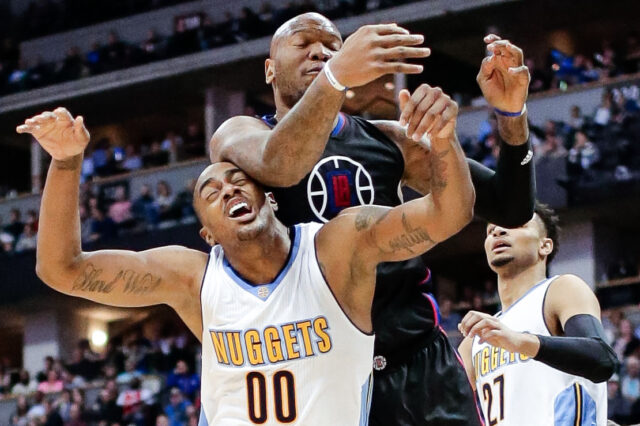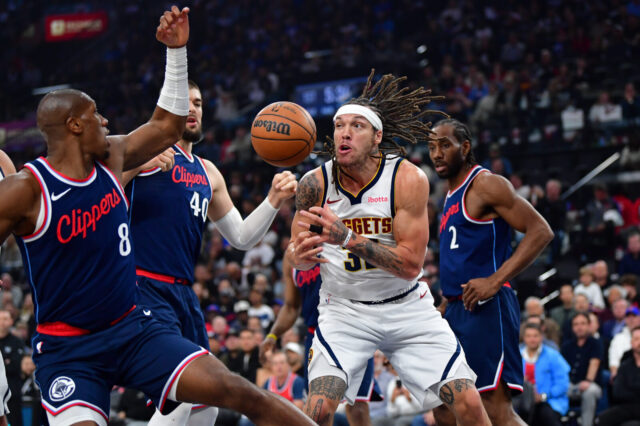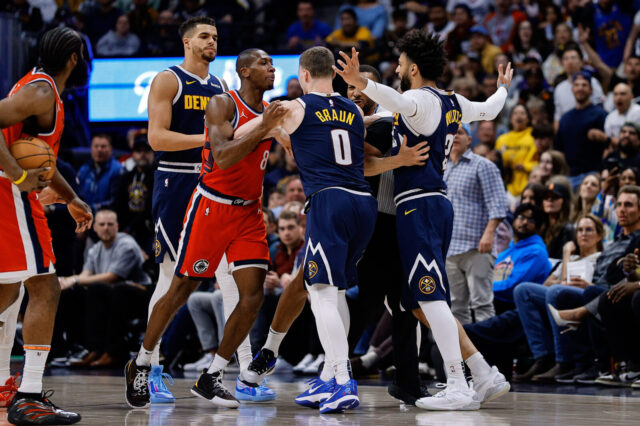Well, with the news that the Denver Nuggets elected to participate in a sign-and-trade with the Golden State Warriors – we’ve seen a lot of ideas on what Denver should do with the “free money”. Among the ideas and possibilities have been a lot of disinformation. Let’s try to get to the bottom of how the Nuggets could use the Traded Player Exception or TPE they received.
What is a TPE?
Let's turn to our old friend Larry Coon and his Salary Cap FAQ for the answer here:
Here is an example of a non-simultaneous trade: a team trades away a $2 million player for a $1 million player. Sometime in the next year, they trade a draft pick (with zero trade value itself) for a $1.1 million player to complete the earlier trade. They ended up acquiring $2.1 million in salary for their $2 million player — they just didn't do it all at once, or even necessarily with the same trading partner.
In the above example, following the initial trade of the $2 million player for the $1 million player, it was like the team had a $1 million "credit" which was good for one year, with which they could acquire salaries without having to send out salaries to match. As with simultaneous trades, teams are allowed to acquire an extra $100,000 — so a $1 million credit can be used to acquire $1.1 million in salaries. This credit is often referred to as a Traded Player exception or a trade exception, but be aware that the CBA uses the name "Traded Player exception" to refer to the entire exception which allows teams to make trades above the salary cap (including both simultaneous and non-simultaneous trades). In this document "Traded Player exception" is used to refer to the exception, and "trade exception" is used to refer to the one-year credit.
So, essentially the Nuggets signed Andre Iguodala to a 4-year, $48 million, $12 million per season, and then traded him to the Golden State Warriors. The Warriors (or perhaps the Nuggets) traded a future second-round pick to the Utah Jazz. The Jazz signed Randy Foye to a 3-year, $9 million deal (with a team option for the third season) and then traded him to the Nuggets, according to Sam Amick of USA Today.
So, Denver sent out $12 million in salary and thus created a $12 million "credit" to use within the next year that they can tack an additional $100,000 onto. So, Denver has $12.1 million at their disposal to use and they can go over the salary cap in order to use the money. Amick also informed us that Foye's contract would be absorbed in the TPE, so that takes up $3 million of the TPE.
The Nuggets now have a TPE of $9 million + $100,000 to use within the next year = $9.1 million.
What are the rules behind using the TPE?
Number 1:
Teams cannot use trade exceptions to sign free agents; they can be used only to acquire existing contracts from other teams. However, a team can acquire a free agent using a trade exception if he is signed by his prior team and traded in a sign-and-trade transaction.
What’s this mean for the Nuggets? If Tim Connelly so chooses, he could acquire Monta Ellis (don’t worry, it won’t happen … I don’t believe) in a sign-and-trade deal with the Bucks. The first year salary could only go up to $9.1 million, but it could be done. Should that be done? No.
Number 2:
Trade exceptions are not traded from one team to another. Sometimes it appears like this is happening when one team uses a trade exception to acquire salary without sending salary away, and the other team gains a trade exception in the same process because they sent away salary without receiving salary in return. However, the trade exception the first team uses and the trade exception the second team gains are two distinct exceptions.
What’s this mean for the Nuggets? Pretty self explanatory right there. If the Nuggets use the $9.1 million to acquire, say, Ryan Anderson from the New Orleans Pelicans – the Nuggets would use $8.3 million of the TPE, Anderson’s 2013-14 salary, and the Pelicans would then get a brand new $8.3 million TPE. The Nuggets would then have $800,000 remaining to use of their TPE.
Number 3:
Teams cannot combine trade exceptions with other exceptions (such as the Non-Taxpayer Mid-Level exception or a taxpaying team's 125% plus $100,000 margin from another simultaneous trade) in order to trade for a more expensive player. For example, a taxpaying team with a $1 million trade exception cannot combine it with their $2 million player to trade for a $3 million player.
What's this mean for the Nuggets? The Nuggets cannot get a player than makes over $9.1 million with their TPE. If the guy makes $9.2 million? No. If the guy makes $19 million? No.
Number 4:
A common misconception is that players cannot be traded together in a non-simultaneous trade. This is not true — players can be traded together as long as the deal can be constructed as separate, parallel trades in which the outgoing salaries are not aggregated. For example, trading two $10 million players for a $20 million player requires aggregation, and therefore must be simultaneous. But trading two $10 million players for a $12 million player can be accomplished without aggregation — one of the $10 million players would be used to acquire the $12 million player in a simultaneous trade, and the other $10 million player would be traded for “nothing,” in a non-simultaneous trade, gaining the team a $10 million trade exception.
What's this mean for the Nuggets? This one is a bit confusing as it states it's a "non-simultaneous trade" and not a TPE trade. But I believe the Nuggets could "combine" players in with their TPE by making the deals "separate, parallel trades", but it comes with a caveat. The Nuggets still could not take back a player that makes more than $9.1 million.
Example: Denver sends Andre Miller’s $5.0 million contract to the Washington Wizards for “nothing”. The Nuggets would then get a $5.0 million TPE. The Nuggets would then use their $9.1 million salary to take back John Wall (yeah, I’m that good) and his $7.45 million deal for “nothing”. The Wizards would then get a $7.4 million TPE of their own and Denver would have $1.65 million left of their original TPE.
Confusing? Make sense? I believe that is correct if I'm reading it right and it would likely read: "Nuggets send Andre Miller to Washington Wizards for John Wall" and while the trade wouldn't make sense as it scrolled across the ticker on your screen – because by trading Miller the Nuggets could only take back $6.3 million in salary using the 125% + $100,000 of simultaneous trades – it would make sense because of the aforementioned paragraph as two non-simultaneous deals.
So, that's how the Nuggets will be able to use the $9.1 million Traded Player Exeption that they gained by trading Iguodala to the Warriors and taking back Foye and a TPE from the Dubs and Jazz.
Now if you'll excuse me, I'm going to fall asleep …


